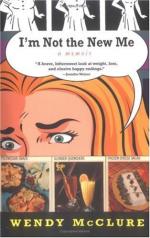From a photograph by Stein, Milwaukee.]
SEEIN’ THINGS.
I ain’t afeard uv snakes, or toads,
or bugs, or worms, or mice,
An’ things ’at girls are skeered
uv I think are awful nice!
I’m pretty brave, I guess; an’
yet I hate to go to bed,
For when I’m tucked up warm an’
snug an’ when my prayers are said,
Mother tells me “Happy dreams!”
and takes away the light,
An’ leaves me lyin’ all alone
an’ seein’ things at night!
Sometimes they’re in the corner,
sometimes they’re by the door,
Sometimes they’re all a-standin’
in the middle uv the floor;
Sometimes they are a-sittin’ down,
sometimes they’re walkin’ round
So softly an’ so creepy-like they
never make a sound!
Sometimes they are as black as ink, an’
other times they’re white—
But the color ain’t no difference
when you see things at night!
Once, when I licked a feller ’at
had just moved on our street,
An’ father sent me up to bed without
a bite to eat,
I woke up in the dark an’ saw things
standin’ in a row,
A-lookin’ at me cross-eyed an’
p’intin’ at me—so!
Oh, my! I wuz so skeered that time
I never slep’ a mite—
It’s almost alluz when I’m
bad I see things at night!
Lucky thing I ain’t a girl, or I’d
be skeered to death!
Bein’ I’m a boy, I duck my
head an’ hold my breath;
An’ I am, oh! so sorry I’m
a naughty boy, an’ then
I promise to be better an’ I say
my prayers again!
Gran’ma tells me that’s the
only way to make it right
When a feller has been wicked an’
sees things at night!
An’ so, when other naughty boys
would coax me into sin,
I try to skwush the Tempter’s voice
’at urges me within;
An’ when they’s pie for supper,
or cakes ’at ‘s big an’ nice;
I want to—but I do not pass
my plate f’r them things twice!
No, ruther let Starvation wipe me slowly
out o’ sight
Than I should keep a-livin’ on an’
seein’ things at night!
[Illustration: THE SABINE WOMEN. FROM A PAINTING BY DAVID.
The legend of the Sabine women is familiar. In the early days of Rome, Romulus, the city’s founder and first king, finding his subjects much lacking in wives, invited the Sabines, a neighboring people, into the city for a feast and games; and in the midst of the sport, he and his followers seized the Sabine mothers and daughters by force of arms, and married them out of hand. David’s picture represents the seizure. Classical subjects were especially preferred by David and his school.]
A CENTURY OF PAINTING.
NOTES BIOGRAPHICAL AND CRITICAL.—THE ART OF FRANCE IN THE BEGINNING OF THE NINETEENTH CENTURY.—DAVID AND HIS FOLLOWERS.
BY WILL H. LOW.




